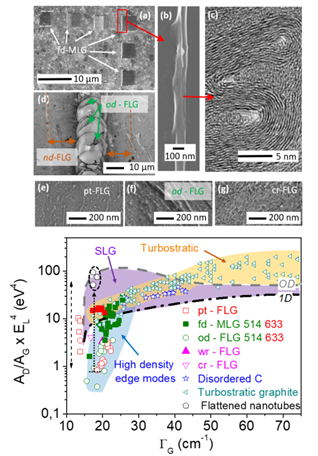Multilayer graphenes: lot of details obtained with standard Raman microscopy
Cédric Pardanaud
Aix-Marseille Univ. - CNRS, PIIM, Marseille, France
Richness and complexity of Raman spectra related to graphene materials is established from years to decades, with, among others: the well-known G, D, 2D,... bands plus a plethora of weaker bands related to disorder behavior, doping, stress, crystal orientation or stacking information [1]. Herein, we report on how to detect crumpling effects in Raman spectra, using a large variety of few and multilayer graphene [2]. The main finding is that these crumples enhance the G band intensity like it does with twisted bi layer graphene. We updated the D over G band intensity ratio versus G band width plot, which is generally used to disentangle point and linear defects origin, by reporting surface defects created by crumples, introducing ‘2D defects’. We use Raman plots (2D bands versus G band positions and widths) to gain qualitative information about the way layers are stacked [3]. For some samples, we also report on the Raman behavior of low frequency shear and layer breathing modes.

D band over G Raman band intensity ratio in function of G band width to identify new 2D defective carbons for many multilayers. [2]
References
[1] A. Merlen et al., Coatings 2017, 7, 153
[2] D. Nikolaievskyi, et al., Carbon 2023, 203, 650
[3] C. Pardanaud, et al., J. Phys. Chem. Lett. 2019, 10, 3571

